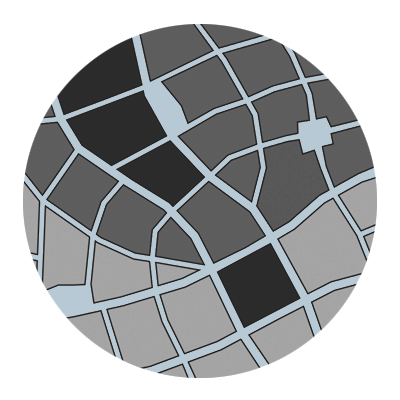A Placemaking Journal
CNU21: Insights and Highlights from Salt Lake City
Git ‘Er Done | Hazel Borys
This year’s CNU was all about doing again, unlike the past few years where we’ve focused on stop-gap measures to redirect our investment choices to more resilient patterns. Looks like they might be starting to pay off. Still, we have plenty of hard work ahead to remove both legal and financial hurdles.
Building: Placemaking talk at the Congress has shifted toward full-on implementation. The numbers of sessions on finance and ROI have spiked, while “making the case” has been relegated to the background. The developers are back! And they’re building stuff. But they’ve brought the investment bankers with them, because the post-crash blinders are evident in the financial markets. It’s not that the bankers are risk-averse, it’s just that they know how to value and bundle bedroom communities and strip malls, but not walkable, diverse neighborhoods.
Developer Robert Chapman complained that live-works with over 20% ground floor retail are only available to very wealthy people who are able to pay cash. Of the 19 standard real estate products, 17 promote sprawl. Clearly the mono-culture of bundling and packaging mortgages into tranches that deliver homogenous urbanism doesn’t support the sorts of walkable, mixed use, compact forms that fuel growing market demand.
To help bridge that disconnect, investment banker, Kurt Roeloffs, advised us not to try to change the current finance system. Instead, incrementally replace it. Most bankers prefer walkable urbanism, even though the finance community enables just the opposite. Our job is to make the case to the host of intermediaries between money and opportunities, namely banks and investment banks. The banks create loans, and the investment banks package those loans into products of similar definition and risk.
Until we can create enough of a portfolio of walkable urban types to create standard real estate financial products, our best option is community banks. Communities redevelop at the rate at which they are saving. Community banks are personally-based, with more leeway in loan decisions. How to securitize local banks and cycle loans is the primary goal for financing walkability.
The Federal Housing Administration (FHA) is set up for housing, not Live/Work/Walk. We must help them find words to redefine their mission. Fannie Mae and Freddie Mac recycle, package, sell, and insure loans. This works because it’s cookie cutter. We’re asking banks and investment banks for something so unnatural for them. What do they have that is like what we do?
Urbanists should stop saying, “There’s no credit for this product.” Instead, connect with local and regional banks, instead of someone in NYC. Figure how to package high performance Live/Work/Walks, and create secondary markets. Developers are raising equity capital from locals connections, and adding debt support from local banks, with pro rata guarantees. We’re also seeing a surge in walkable light industrial financed in this manner.
However, we still need asset classes to get 30-year paper off community banks’ books. The issue of scale must be brought to the Live/Work/Walk finance conversation, as well as educating bankers on risk and appraisers on value. In the mean time, we’re seeing alternative structures funding Live/Work/Walk from sources like Kickstarter.
In the mean time, we noticed that the CNU Charter Awards (2.5mb PDF) are starting to award great developments again, instead of solely about great plans.

Coding: One of my favorite moments was the Tuesday night Fireside Chat at the Peery Project with Matt Lewis talking about the San Marcos, Texas SmartCode adoption and its outcomes and Marina Khoury talking about the Miami, Florida SmartCode adoption and its outcomes. These two cities show that whether it’s a population of 50,000 or 500,000, form-based codes have significant positive social, economic, and environmental impacts across a wide range of conditions. Our past CNU 202 SmartCode Calibration Workshop focused on the introductory principles. This time, we divided into tables based on beginners, intermediary, and advanced. A first for us, that show some big steps forward.
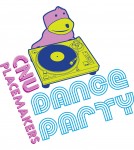
Moving: It’s always good to dance. Sitting is the new smoking, so move it. Both on the PlaceMakers Dance Party Friday night, and throughout the Congress, people were moving. Using the GREENbike SLC 2-month old bike share, urbanists were pedaling their way through local urbanism in both organized and spontaneous groups. The Art Room got up and walked outside, with inspiring leaders coaching hands-on drawing and photography sessions. More satisfied tweets came out of this session than any other, except perhaps the plenary with Andrés Duany to open the Congress and Charles Marohn to close the week.
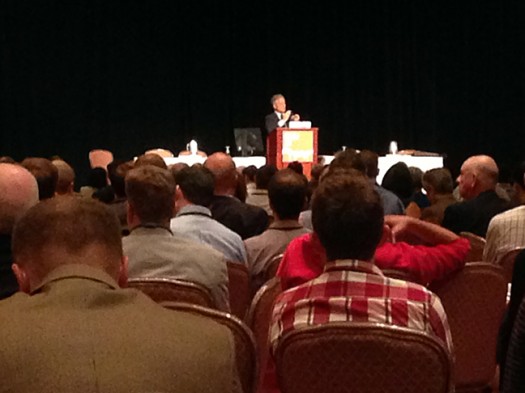
cede the stage, Duany polled the audience as to whether or not he should vacate. The results made clear that, at CNU, ideas dominate over structure. He continued for another half an hour.
People + Place: It’s in the Mix | Howard Blackson
My relationship with the Congress has changed over the past 14 years. Moving from the more professional to the more personal, the bulk of my time at CNU21 was spent deep within the Peery Project, a looser, more interactive “shadow CNU” assembled and coordinated by our friends at DPZ & Co. Over coffee and beer, I was able to really spend time with my many dear New Urbanist friends and colleagues. We spoke of home, work, children, cash flow, design conundrums, lecture topics, as well as of those — like my much missed colleague, Geoff Dyer — who didn’t attend this year.
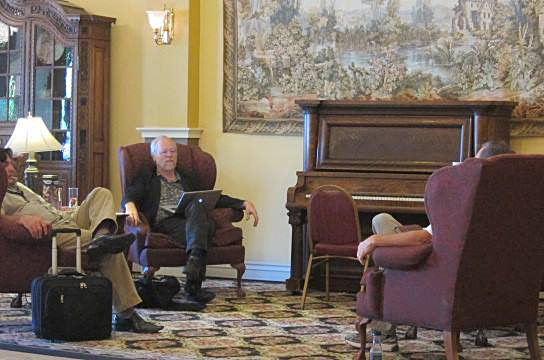
Yet despite the laughing, debating, lecturing, listening and watching great First+Main movies in the Peery Hotel’s various rooms a half mile from the main CNU venue, I returned home somewhat conflicted. I believe the quality of the space we interact in matters and should be equal to the quality of the people who attend, which is extraordinary. The Peery Project appeared to be an affirmation of such, as it was gritty, complex, out-of-control, well-conceived and fun.
My CNU brethren are an invigorating mix of controversial, rigorous, engaging, politically polarizing, emotional and extremely visionary people who care about place. Ellen Dunham-Jones noted in the closing that we are the professional organization that hugs. As our organization continues to evolve towards the NextGen agenda, I hope our Congresses continue to embrace our constituency of folks that truly love making our lives better.
Heart and Soul | Scott Doyon
With the caveat that the plenaries and sessions of CNU21 were strong and that the host committee more than met attendee expectations (not a small accomplishment, as we tend to be a fairly discriminating audience), I’ve got to join Howard in a chorus of praise for DPZ’s Peery Project.
I’ve been attending CNU since year ten in Miami and, even then, long-time attendees spoke nostalgically of the original congresses — modest in scale, interactive in nature, and vigorous in debate. The challenge faced each year is managing larger and larger audiences in ways that both engage the newcomer while accommodating those ready and able to take the conversation to a higher level. It’s a balancing act akin to the suburbs and the results are to be expected — meeting basic needs adequately yet failing to provide a fully immersive and satisfying experience for anyone in particular.
That’s okay, because to do otherwise would disenfranchise half the attendees and that’s not exactly an advisable recipe for gaining traction. And it’s even more okay this year, because DPZ’s Peery Project, in providing opt-in alternative programming and discussion venues for anyone interested, took great strides towards restoring that lost culture.
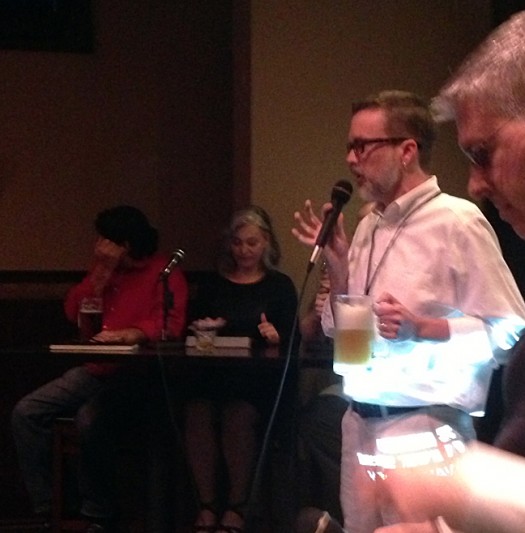
me, teamed with Russ Preston, debating Eliza Harris and Will Dowdy, which we totally won,
except for the part where the audience results confirmed otherwise.
My personal highlight was the culmination of something I’ve been working on for some time. As PlaceShakers regulars know, I’ve repeatedly featured the work of Clay Chapman, a designer and brick mason working to create a model of near-permanent construction at a middle-class price point commensurate with that paid for stick-built.
When I first met Clay, I was amazed at how much he had achieved, and how many years he had worked, all the while having no idea just how many kindred spirits and complementary professionals existed within the ranks of the CNU. To me, he was doing the field work of the Original Green — the traditional wisdom sustainability model championed by Steve Mouzon — without even knowing it. It seemed like some sort of karmic injustice, one I’ve since made my personal quest to rectify by connecting Clay to as many like minds as possible.
Because the proposed session — where Steve meets Clay and the two of them present Original Green sustainability from the city to the village to the level of a single house — was met with yawns by the CNU21 programming committee, it was ultimately DPZ’s Peery Project that made it possible. And a big thanks for that, as the two of them ended up wowing a standing room only crowd, including some pretty notable and high-ranking folks within the movement. Very gratifying, and I expect great things to emerge from the convergence of these leading minds.
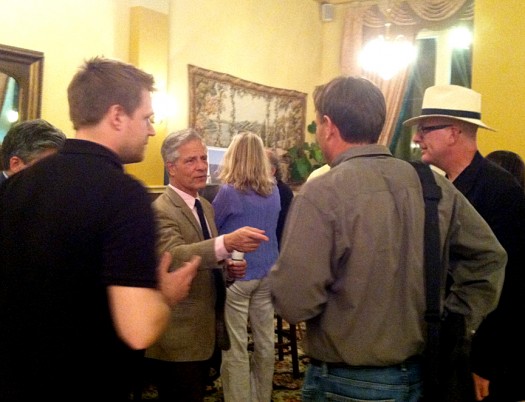
In closing, I want to mention one conversational highlight from the week. I was speaking with Portland via Asheville architect Daryl Rantis about high-tech green home models coming out of Europe that, according to some, perform so well that even if you factor the embedded energy of a previous structure torn down to accommodate them, they still come out ahead.
Something about that just didn’t feel right. Rantis mentioned that he found the renderings to be cold and impersonal, lacking any sense of humanity or craft, which got me thinking about the idea of soul. For many, it’s the identifiable work of human hands and the pockmarked evidence of human habitation that, at least in part, gives soul to our structures. If you consider such soul metaphysically, you might conclude that it carries some level of inherent energy — energy not currently calculated among the materials and labor embedded within a particular building.
So I ask you: If you tear down a storied and graceful historic building and replace it with a high-performance, modular gizmo-green equivalent, how much embedded energy is lost if you also count the loss of soul?
Ponder on, dear PlaceShakers. We’re glad to be back.
If PlaceShakers is our soapbox, our Facebook page is where we step down, grab a drink and enjoy a little conversation. Looking for a heads-up on the latest community-building news and perspective from around the web? Click through and “Like” us and we’ll keep you in the loop.





